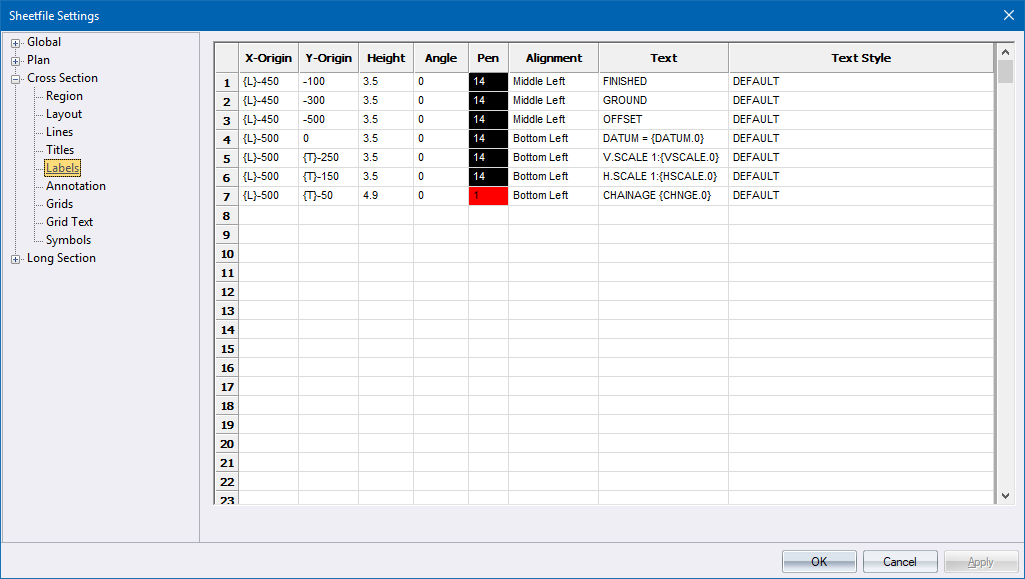

This page defines text entities that will be written on each cross-section.
|
Option
|
Description |
|
X-Origin and Y-Origin |
Enter the position at which the text should be placed. There are some predefined variables that can be entered here. Right-click the cell to select a variable from a popup menu. An explanation of the available variables is shown below. |
|
Height |
Enter the height of the text in mm. |
|
Angle |
Enter the angle in degrees at which the text should be drawn. |
|
Colour |
Select the pen in which to plot the text. Right-click the cell to display the pen selection. |
|
Alignment |
Select the alignment of the text. |
|
Text |
Enter the text to be plotted. There are some predefined variables that can be entered here. Right-click the cell to select a variable from a popup menu. An explanation of the available variables is shown below. |
|
Text Style |
Select the text style in which the text should be drawn. |
|
Variable
|
Description |
|
{L} |
The left edge of the section. |
|
{R} |
The right edge of the section. |
|
{T} |
The top edge of the section. |
|
{B} |
The bottom edge of the section. |
|
Variable
|
Description |
|
{HSCALE} |
The horizontal section scale. |
|
{VSCALE} |
The vertical section scale. |
|
{CHNGE.x} |
The chainage of the particular section. |
|
{DATUM.x} |
The datum of the particular section. |
|
{CUTAREA(y).x} |
The area of the cut in the particular section. |
|
{FILAREA(y).x} |
The area of the fill in the particular section. |
|
{SKEWANG.x} |
The cross-section's skew angle as specified in the Index file. |
The .x in the above variables can be substituted with a value that specifies the number of decimals to be displayed. For example, if the chainage was 500 and the text item was specified as "{CHNGE.3}" then the text drawn would be 500.000.
The (y) in the above variables must be substituted with the layer number from which the area values are to be extracted. For example, if the final road sections were on layer 2, a cut area entry (to 3 decimal places) would be entered as {CUTAREA(2).3}.